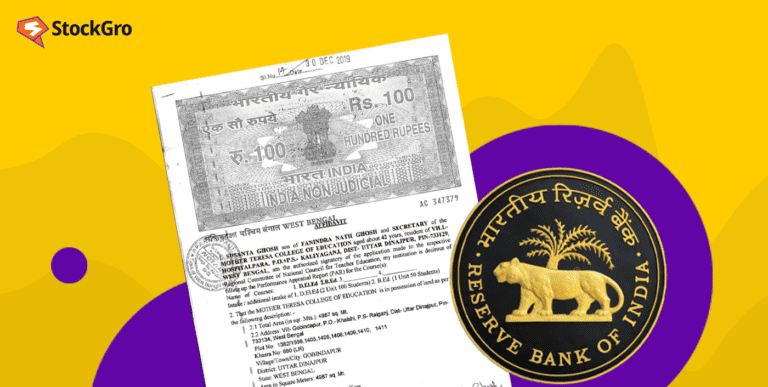
For most people, the full-form of the acronym is enough explanation for this strategy. Unlike intra day trading where you’re supposed to buy and sell stocks the same day (in one trading session), BTST allows traders to take advantage of short-term volatility for 24 hours – across two trading days.
In a world where stock traders are always trying to outdo each other and beat the market at the same time, any strategy that allows an edge over something else is highly in demand. For a lot of these traders, BTST is that edge.
In this article, we’re going to understand what BTST is in detail, how the strategy works, how you can make money from it, and what you should be careful of. Let’s dive right in!
What is BTST trading?
The BTST trading strategy is based on one simple principle – purchase shares on one day and sell them the following day for a profit. The strategy allows you to take advantage of overnight price differences in the stock market.
When trading intraday, you’re forced to close your positions at the end of the trading session no matter how your investments are doing. Here, you’re allowed to keep them overnight and sell tomorrow, taking advantage of another day’s volatility.
BTST also allows traders to take advantage of the market without having to invest a lot of capital. For investors who have the money to take trades one day but not the next, the BTST strategy frees up their corpus the next day, ready to be used on another investment.
You may also like: Understanding after-hours trading and strategies for success
How does BTST work?
To understand how the BTST strategy works, you must first understand how stock deliveries work. Whenever you buy stock on an exchange, protocol dictates that those shares will be delivered to your demat account on the T+2 day – which means that shares bought on Monday will be delivered to your account only on Wednesday.
However, the catch is that you can sell those shares on Tuesday without taking delivery too. This is allowed. Suppose you do end up selling those shares on Tuesday before you receive delivery. Now, when Wednesday rolls along, the broker you’re using receives the shares you ordered. However, the broker also has to process the sell order you placed the previous day. Hence, as soon as these shares are received, they’re sold off and delivered to the buyer by Thursday.
All in all, a BTST transaction that was initiated on Monday and completed on Tuesday will get settled on Thursday – that is, T+3 days after the initial stock purchase.
What about the money?
When you buy shares on Monday, you pay full price. Suppose it amounts to ₹50,000. Hence, fifty thousand rupees get deducted from your account. On Tuesday, suppose you sell the shares for a cumulative value of ₹55,000. When you place the sell order, you instantly receive 80% of the sell value. In this case, that’s ₹44,000. This money can now be used on another trade on Tuesday. The rest of the money gets to your account by Thursday.
This is why BTST sales are so effective. It allows you to use roughly the same amount of capital to stay invested in the market for longer. Not only that, the strategy also lets you take advantage of overnight stock price movements, not to mention letting you hold your investments for two trading sessions instead of one.
Also Read: How does arbitrage trading work?
Are there risks associated with BTST trading?
Like with any other stock market trading strategy, there are risks associated with BTST too. Here are a couple of them:
- Since you’re technically taking delivery of the stocks you invest in, you can’t use the broker’s margin to trade. Hence, any leverage you want in the trade has to come from your personal cash balance.
- According to SEBI regulations, traders engaging in BTST trading are required to pay a 40% (20% for buying and 20% for selling) margin before executing the trade.
- If the stocks you buy and sell fail to deliver on time, the whole process gets delayed. Hence, if the final buyer receives his stocks late, the exchange could penalise you for your BTST manoeuvre.
Using the BTST correctly
Here are some tips on how you can use the BTST correctly:
- Before a potentially favourable event – If you think that an announcement, event, or report could move stock prices up, use the BTST strategy to ride the price wave for more than one trading session before you sell. These events could be anything from a change in RBI policy to mergers and acquisitions.
- Monitoring opening and closing prices – Observe your candlestick chart closely during the close of the first trading session. Experts believe that most price action in the market usually occurs after 2 PM every day since that’s when big traders usually start settling their bets. Observe the stock’s price movement from 2 PM to 3:15 PM to gauge whether the stock will open higher or lower the next day.
- Use stop losses – Like with any other trade, use stop losses to make sure you’re not losing more than you can afford on any one trade.
- Choose highly liquid stocks – If you’re buying and selling large quantities with BTST, you want to choose companies that are highly liquid on the market to make sure that you’re entering and exiting exactly at your targets.
Advantages and disadvantages of BTST
BTST trading comes with its own set of benefits and drawbacks. Let’s take a closer look at both to help you determine if this strategy aligns with your trading goals.
Advantages:
Lower capital requirement: Unlike traditional delivery-based trading, BTST trading requires a smaller investment for a shorter duration. This means that you can free up your capital sooner, allowing for a greater number of trades and increased flexibility in managing your funds.
Taking advantage of overnight price movements: BTST traders can leverage overnight events that impact stock prices, such as announcements, earnings reports, or global market trends. This creates an opportunity to benefit from price gaps between the closing price and the next day’s opening.
Higher liquidity and flexibility: Since BTST focuses on liquid stocks, traders can easily enter or exit a position without worrying about market availability. This means you’re less likely to be stuck holding shares you can’t sell at your desired price.
Less time commitment: Since BTST trades are conducted over two trading sessions, they require less time compared to long-term investments. This appeals to traders who want to profit without the need for in-depth, long-term research.
Disadvantages:
Delivery risk: One of the main risks associated with BTST trading is the possibility of a delivery failure. If the shares you purchase aren’t delivered on time, you may face penalties, and your BTST trade could be delayed, leading to unforeseen complications.
Volatility risk: As BTST is based on short-term price changes, it exposes traders to overnight market volatility. External factors like international events, macroeconomic data, or unexpected announcements could cause substantial price changes, leading to potential losses.
No broker margin: Unlike intraday trading where you can use the margin provided by the broker, BTST trading requires a full cash margin. This means you need to fund your trades completely, and you don’t have the leverage benefit of borrowing from the broker.
Margin requirements: The Securities and Exchange Board of India (SEBI) requires BTST traders to maintain a margin for both buying and selling, which can sometimes be restrictive, especially for traders with smaller capital.
Best BTST strategies
To make the most of BTST trading, you need to have a well-thought-out plan. Here are some of the best BTST strategies to maximise profit and minimise risk:
Identify potential catalysts
Stay informed about upcoming news events or developments that could influence stock prices. This could be earnings reports, mergers, acquisitions, or changes in regulatory policies. Timing your BTST trades to coincide with such announcements allows you to ride the potential price wave for short-term gains. The key is to act quickly and decisively when the news breaks.
Choose high-volume stocks
Select highly liquid stocks that have high trading volumes. Liquid stocks have smaller bid-ask spreads, allowing you to enter and exit trades at desired prices without slippage. It also means that you can quickly sell your shares the following day, minimising the chances of getting stuck with a position.
Observe technical indicators
Use technical analysis to determine potential buy and sell points. Monitor charts for patterns, support and resistance levels, and important moving averages that might signal where the price is likely to move. Pay particular attention to the closing price and opening price patterns; if a stock closes strong on a given day, it may indicate a positive trend the next day.
Set stop loss levels
A well-placed stop loss is crucial for managing risk. Even though BTST trades tend to be short-term, they can still expose traders to unexpected market movements overnight. Setting stop losses ensures that your losses are limited if the trade goes against you, preventing a small loss from becoming a significant one.
Monitor market sentiment
Market sentiment plays a crucial role in BTST. Keep an eye on broader market indices and understand whether the overall market is in a bullish or bearish trend. Trading in the direction of market sentiment can increase the odds of a successful trade. If the market is generally positive, your BTST trades are more likely to benefit from rising prices the next day.
Conclusion
Hence, BTST allows you to:
- Hold your investments overnight in case they appreciate after trading hours
- Research your stocks more as they’re pending delivery to your demat account. Hence, you have more time to put into assessing market conditions, news developments, and other factors that might impact the stock’s price.
- Use your capital more efficiently throughout the week by investing every day and selling every day.
Also Read: Your guide to paper trading
However, there are risks associated with this type of trading too. Not only could you suffer losses overnight, but you could also be liable to pay penalty fees to your exchange if share deliveries get delayed.
Hence, we encourage you to conduct your own research before using the BTST strategy and ensure that your broker allows such manoeuvers beforehand so you don’t have to pay any unexpected fees. Good luck!

